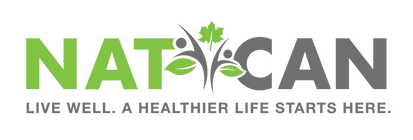One of the most important things you can do when optimizing your fertility is to learn about your menstrual cycle – the ebb and flow of hormones that allows for pregnancy to occur!
Many women have little to no understanding of the events that lead up to their period. Many women don’t even know when to expect their period because they have never tracked it.
This post will take you through the hormonal changes that allow our body to become pregnant – each step of which is vital for optimal fertility.
Remember – these dates are approximations based on a “typical” 28-29 day cycle. In every woman there may be individual variations.
The Big Events
Days 1-5
The biggest event in our menstrual cycle is arguably our menstrual period. It’s certainly the most noticeable event! On the first day of our period our major fertility hormones, estrogen and progesterone are at their lowest level. This low hormone state allows for the period to start. It also triggers our pituitary gland to start making hormones (LH – lutenizing hormone and FSH – follicular stimulating hormone) to stimulate growth of new follicles in the ovaries.
Day 7
At the end of the first week estrogen levels are increasing and in the ovaries the follicles are growing rapidly. One of these follicles surpasses the others and becomes the dominant (graafian) follicle. The follicle starts producing its own estrogen, adding to the high total amount of estrogen.
Days 7-12
The high levels of estrogen stimulate the lining of the uterus to thicken and prepare for possible implantation later in the cycle. The glands of the cervix also begin to produce a new type of cervical fluid – the fertile cervical mucus.
Days 12 and 13
High levels of estrogen act on the pituitary, stimulating it to produce lutenizing hormone (LH). The LH surge stimulates production of enzymes and prostaglandins in the dominant follicle, preparing the follicle to ovulate its egg.
Day 14
Ovulation occurs when enzymes breakthrough the follicle wall and prostaglandins stimulate the release of the egg.
Day 15-25
The follicle that released its egg at ovulation is now a corpus luteum. The corpus luteum produces progesterone. Higher progesterone levels are noted on the basal body temperature tracking chart as an increase in body temperature of 0.4-0.5°C. Under the influence of progesterone the uterine lining continues to thicken and secrete nutrients. Progesterone also inhibits the pituitary from producing any more follicle stimulating hormone (FSH), preventing more follicles from developing in this cycle.
Day 19 or 20
Peak progesterone levels allow for implantation of a fertilized embryo in the lining of the uterus.
Day 25-28
If implantation of an embryo does not occur the corpus luteum stops producing hormones and levels of progesterone and estrogen drop. This sudden decline in hormone levels leads to loss of the endometrial lining as a menstrual period. The drop in hormones also signals the pituitary gland to once again start production of FSH and LH to prepare a new group of follicles for ovulation.
This knowledge, combined with the information gathered from your BBT tracking and cervical fluid monitoring can help you to take charge of your fertility and optimize your chances for conception each month.
Disclaimer
The advice provided in this article is for informational purposes only. It is meant to augment and not replace consultation with a licensed health care provider. Consultation with a Naturopathic Doctor or other primary care provider is recommended for anyone suffering from a health problem.
__________________________________________________________
Dr. Sylvia Santos is a Naturopathic Doctor practicing in Vaughan, Ontario, Canada. She is a passionate about health promotion and encourages her patients and readers to embrace their full health potential. You can follow Dr. Santos on Instagram, Facebook and Twitter or contact her at ssantos@natcanintegrative.com.


